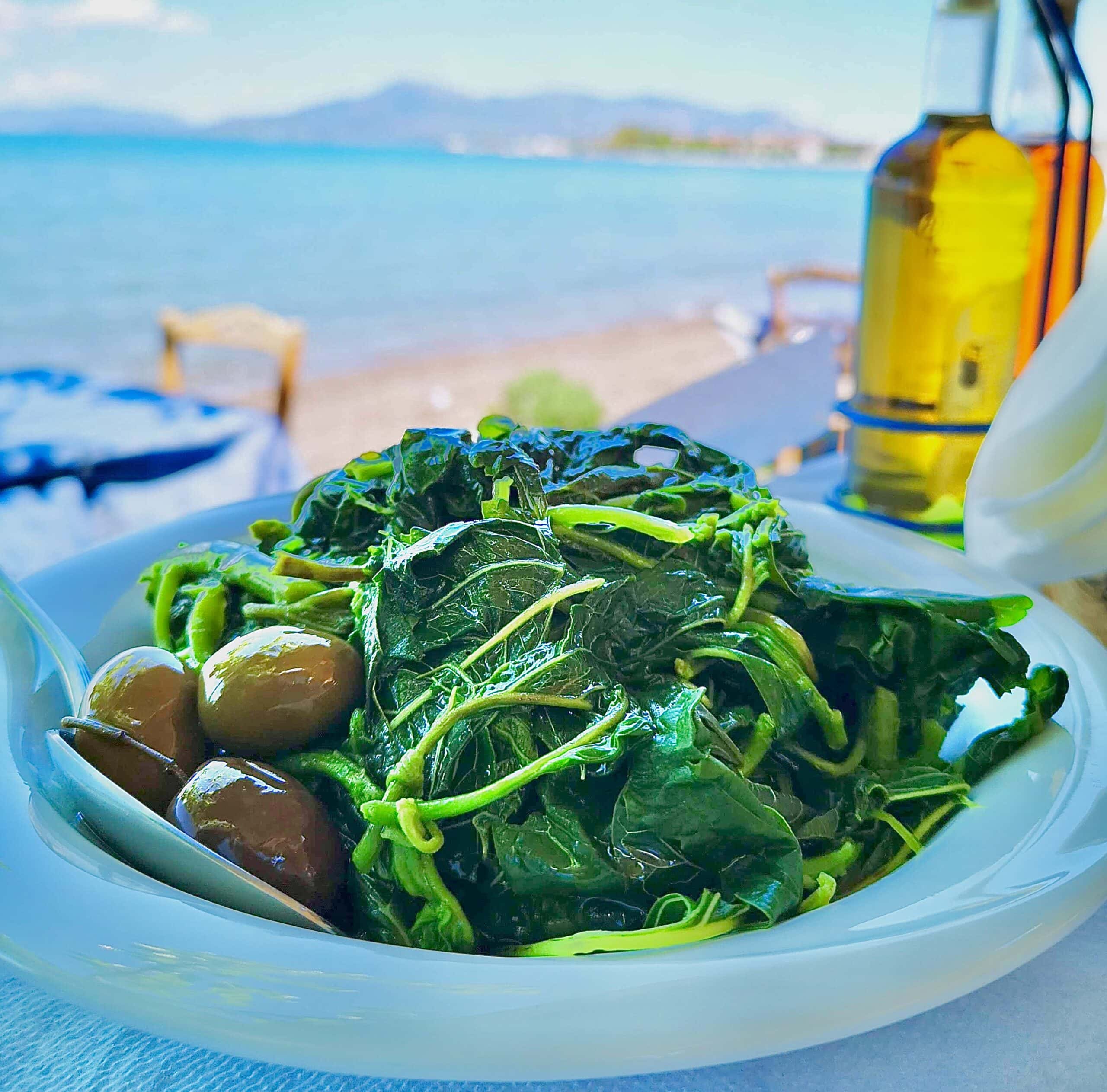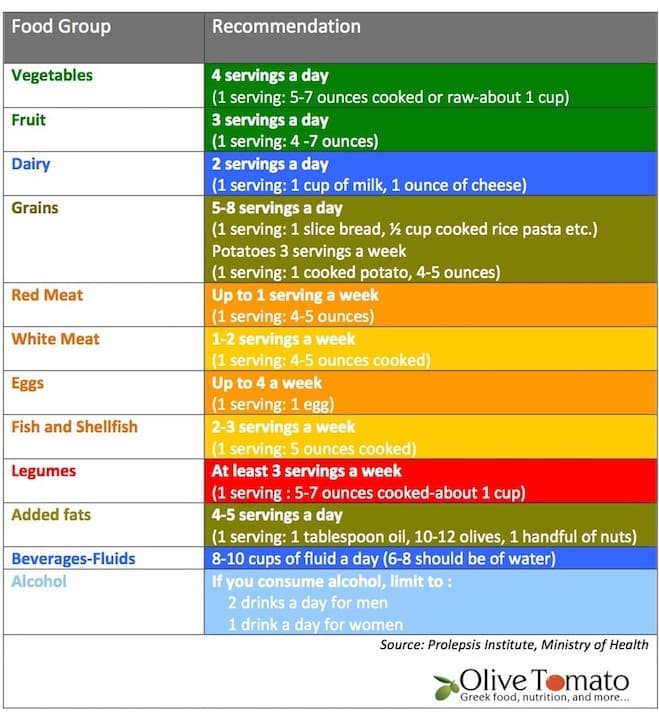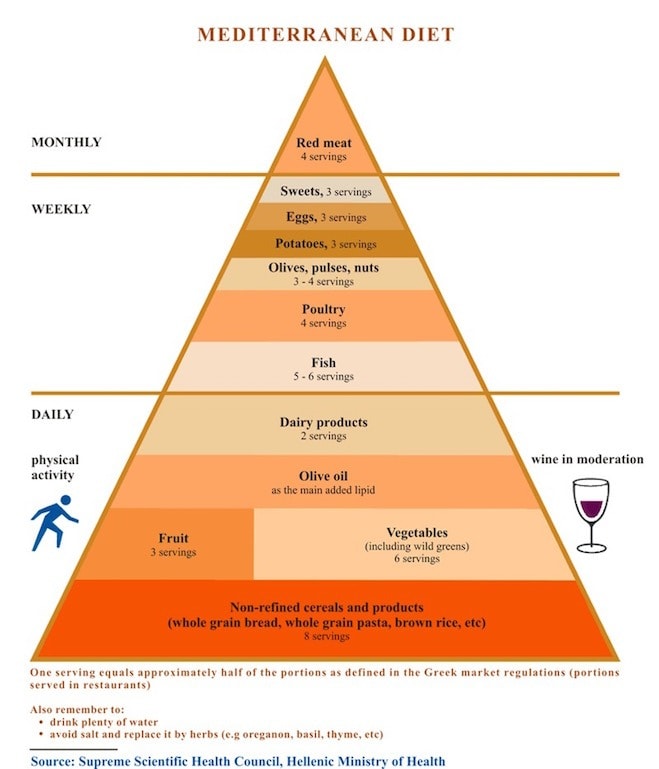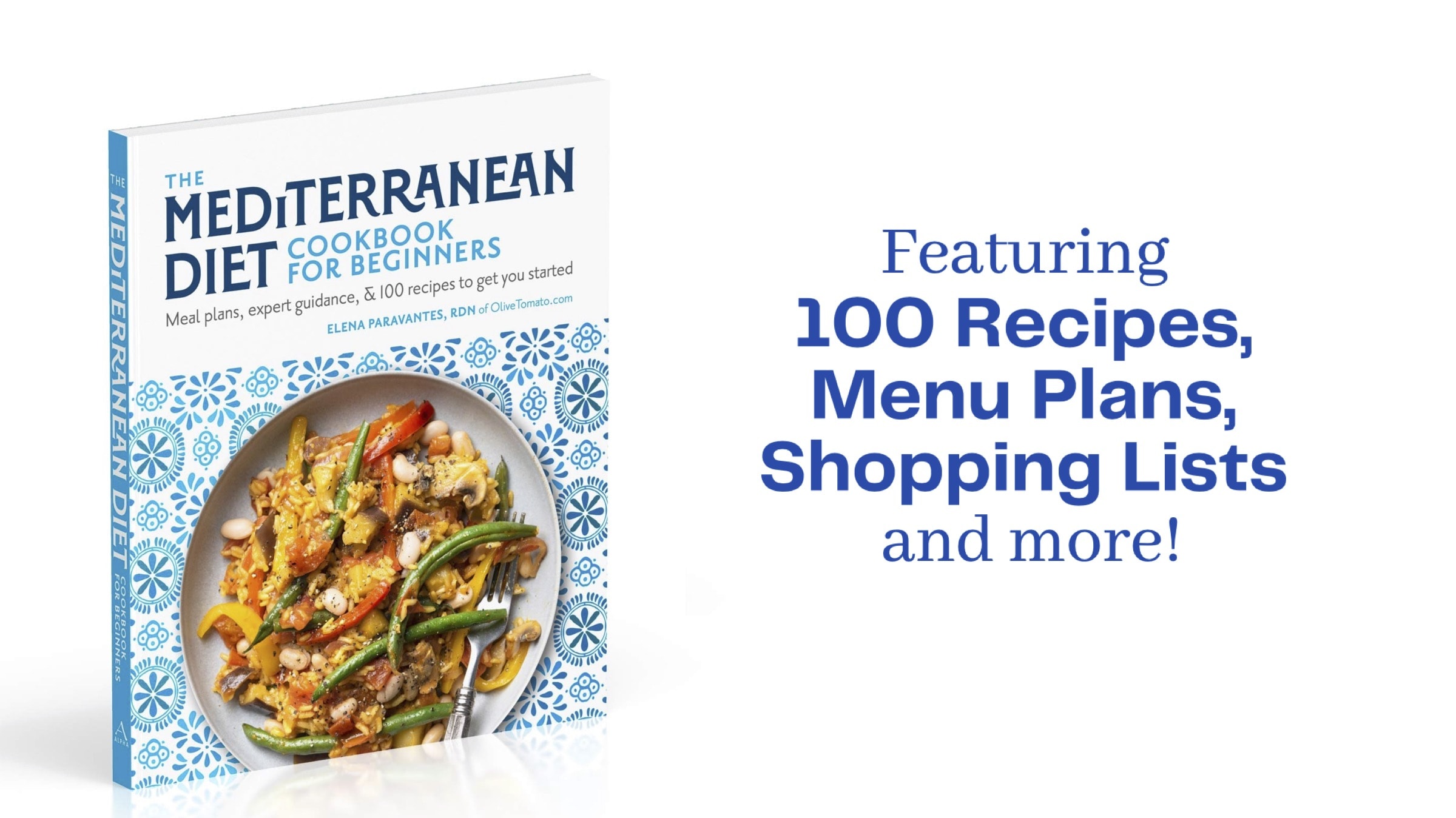The Authentic Mediterranean Diet Guidelines

As you may know, the Mediterranean Diet was based on the eating habits of the people, living on the Greek island of Crete in the 1950’s and 60’s. These people had virtually no heart disease and had the highest life expectancy in the world at that time. Researchers recorded their eating habits and eventually came up with the Mediterranean Diet Pyramid. In their paper published in the American Journal of Clinical Nutrition, physicians and nutrition researchers describe the Mediterranean diet as a diet based on food patterns typical of Crete, much of the rest of Greece, and southern Italy in the early 1960s, where adult life expectancy was among the highest in the world. These very same guidelines are also the official dietary guidelines of Greece.
If you are tired and confused with all those vague descriptions of a pseudo Mediterranean diet and want the real thing, you are at the right place! Scroll down to find just how many servings you need every day of each food group.
Authentic Mediterranean Diet Guidelines

*Table above has been developed and translated by Elena Paravantes. Unauthorized use of this table is prohibited.
And here is the original Greek Diet pyramid, which is essentially a Mediterranean diet:

Want More Mediterranean Diet Guidance? Get my top-rated book!
Get it here >> The Mediterranean Diet Cookbook for Beginners


Is almond flour bread ok?
What can I use in place of cucumber?, and chickpea? Can’t eat these.
I am interested in purchasing the 3mth diet plan but I do not want a rolling bil Would l have to cancel or do you automatically take the next 3 mths payment
Hello, We do not offer any diet plans. Nor do we sell anything. Thank you
All your recipes are delicious. How would you suggest adapting the bread guideline for someone with a wheat allergy? Free from bread is really processed and unpleasant tasting. Is it suitable to replace with rice, quinoa?
where can find the Greek and European guidelines can you provide me with the links
What kind of milk to Greeks drink if any I read in your article that they get their dairy from cheese and yogurt is that the only way how about goats milk? I have two young boys one is still breastfeeding but my older one loves milk everyday is there a better milk to give him daily?
Just discovered you website. Everything sounds wonderful. I have one question. I don’t eat seafood. I don’t like it. I noticed the food guide Shows 5-6 servings a week. Any suggestions what I can do?
Really helpful information thank you.
Thank you Mary!!
Elena, thanks for bringing here all this useful information. Greeks had delicious foods, also I love their way of life.
I am curious, do they also recommend daily recommended values for vitamins/minerals, and a generally recommended number of calories to consume daily? I think, for example, here in the US, it’s around 2,000 calories a day. Either way, this is such a wonderful resource! Thank you so much for sharing this with us 🙂
Hi Christy,
Yes, in the detailed guide they provide recommended values, these are based on the recommendations of EFSA (European Food Safety Authority) and the SCF (Scientific Committee on Food) which is the main committee providing the European Commission with scientific advice on food safety. For calorie level, they recommend 3 levels of intake based on activity and gender and instead of recommending calorie level, they recommend specific amounts of servings from each food group.
Love your info and inspires me to cook healthy! This is how I prefer to eat ! Well also, healthy asian cuisine as well I must say. Always Mediterranean first though! Thank you……
Thank you Skip! Glad to be an inspiration
I just stumbled across this page, amazing tips, recipes and insights! Thank you Elena!
Thank you An!